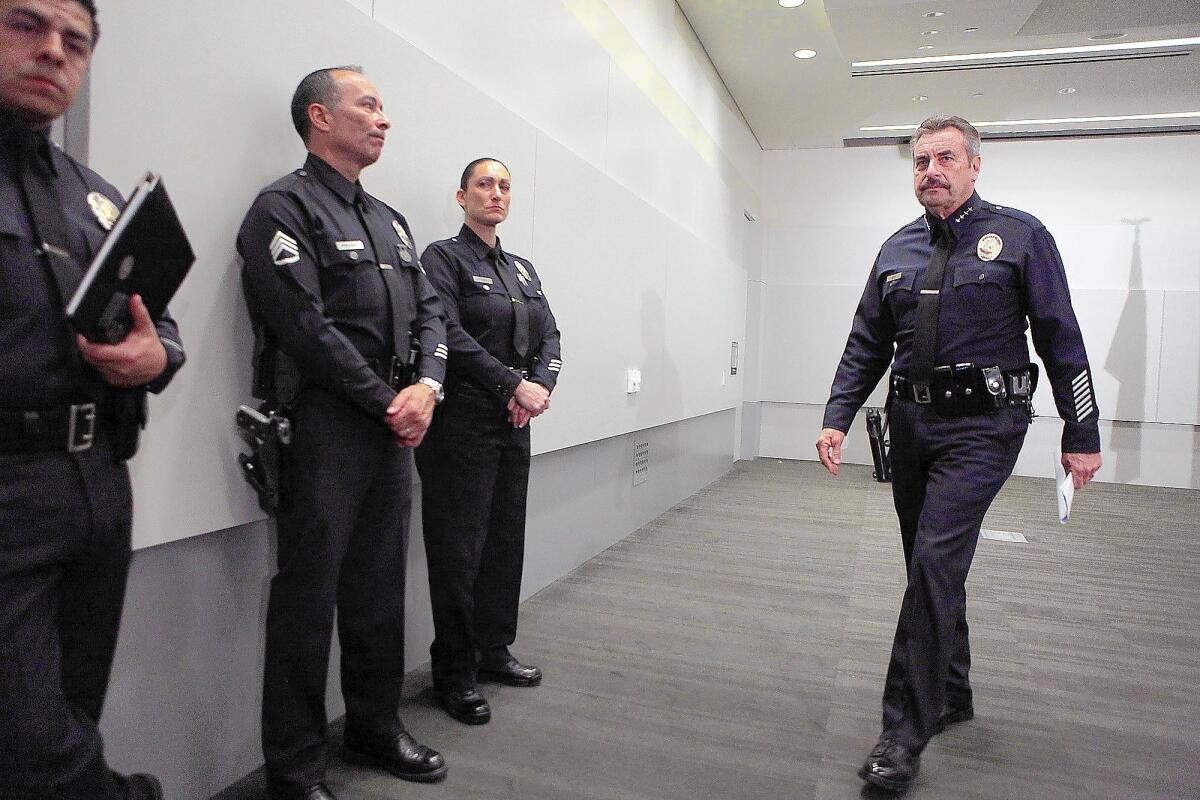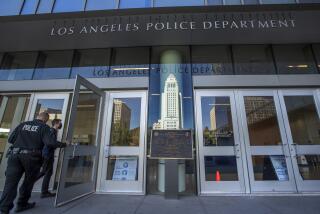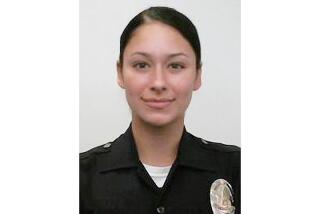L.A. Police Commission may revise scope of shooting inquiries

- Share via
The Los Angeles Police Commission is poised to adopt a major shift in the way it judges police shootings, tying an officer’s decision to pull the trigger to his actions in the moments leading up to the incident.
The rule change, which will be taken up Tuesday, would settle years of debate over whether the commission can make a determination that a shooting violated department policy if the officer created a situation in which deadly force was necessary. Until now, the commission has generally focused on the narrow question of whether an officer faced a deadly threat at the moment he opened fire.
“This is one of the most significant policy decisions we’ve made in my seven years on the commission,” Robert Saltzman said.
DISCUSS AT 12:30 P.M.: How are LAPD officer-involved shootings judged?
Although only a few words would be added to the existing policy, Saltzman said, “the clarification is significant. Some have interpreted our current policy to suggest the commission should ignore all the officer’s pre-force activity, no matter how relevant those earlier actions are.”
The proposal was submitted by the commission’s inspector general, who reviews officer shootings and makes recommendations to the commission on whether they fall in or outside department policy. Along with Saltzman, it has won the support of commission President Steve Soboroff.
For decades, the commission has followed a multi-step process in officer shootings and other deadly force cases. Instead of making a single decision on whether the officer was right to fire, it divides incidents into separate parts.
It first decides if the officer’s actions leading up to the shooting were acceptable. Then it judges the officer’s decision to draw his weapon, and finally the shooting itself.
Most of the time, the process works. In the majority of cases, officers are cleared of any wrongdoing. And when the commission does find that an officer made mistakes early on in an encounter, it is usually clear that those missteps did not lead to the officer’s decision to use deadly force.
But in a few cases each year the line separating an officer’s decision to fire at a suspect from his actions beforehand is difficult or impossible to find.
The shooting of Kamisha Davidson illustrates the difficulty.
Early one morning in November 2011, two officers were dispatched to the Baldwin Hills apartment that Davidson shared with several relatives.
Family members met the officers outside and explained that the 30-year-old woman suffered from bipolar disorder and schizophrenia. Davidson refused to take her medication and had been acting violently and threatened to kill family members since refusing to take her medication, the relatives said, according to department records.
The officers went inside and found Davidson in her bedroom. When she grew agitated and attempted to force her way past the officers, they grabbed her and a fight ensued in the hallway, the records show.
Saying afterward that he feared for his and his partner’s safety, one of the officers shot Davidson in the stomach at close range after she allegedly grabbed a long piece of plastic tubing with screws protruding from it.
The commission faulted the officers for several errors in judgment. The panel was critical of the officers’ decision to enter the apartment without waiting for mental health experts to arrive. And the officers made a further mess of the situation by confronting Davidson without first drawing up a plan for how to deal with her and for failing to handcuff her, the commission found.
Nonetheless, the commission determined that the officer who shot Davidson was justified in using the deadly force.
In reaching their decision, commissioners kept the errors before the shooting separate from the shooting itself. Had the officers handled the minutes before the shooting more capably, they probably would have avoided the fight in the hallway and the need to shoot Davidson. But once Davidson grabbed the plastic tube, the board concluded, she posed a threat that the officer was forced to stop.
The proposed change to the department’s policy stems from a case similar to the Davidson shooting.
After two San Diego County sheriff’s deputies fatally shot a mentally ill man who threatened them with a knife, the man’s daughter filed a suit that alleged the deputies provoked the killing by confronting her father.
Last year, the state Supreme Court issued an opinion in the case, Hayes vs. County of San Diego. The court concluded that a police officer’s decisions before a shooting “are relevant considerations” when deciding if the officer was negligent.
In light of the court’s opinion, Alex Bustamante, the L.A. Police Commission’s inspector general, proposed the clarification to the department’s shooting policy.
Though Bustamante found nothing in the current policy that forbids commissioners from looking at pre-shooting behavior, “the current system … could also lead to outcomes that are at odds with Hayes,” he wrote in a report to the commission.
In several cases over the years, the commission has found shootings violated department policy but apparently none in which the panel explicitly blamed officers for errors that left no other option but to use deadly force.
Other than Soboroff and Saltzman, the three remaining commissioners did not respond to calls for comment.
LAPD Chief Charlie Beck, who recommends to the commission how it should rule on officers who use serious force, said he expected the measure to pass and would adjust the way he reviews cases. He declined to say, however, whether he thought the policy change would improve the way shootings and other serious uses of force by officers were evaluated.
More to Read
Sign up for Essential California
The most important California stories and recommendations in your inbox every morning.
You may occasionally receive promotional content from the Los Angeles Times.










